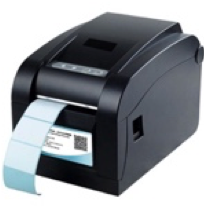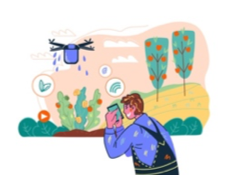The Digital Last Mile
According to Wikipedia, the ‘last mile’ may refer to:
- In Telecommunications: the final leg of the telecommunications networks that deliver services to retail end-users, often completed with copper in the ground.
- In Transportation: the final leg of the movement of goods (or people) from a transportation hub to a final destination. Drones have become a popular way of the completion of the last leg of the delivery chain to the end destination, or consumer.
The exponential growth of computer systems over the last 30 years has been spectacular; however, even for Digitisation, there is still that last leg – or that ‘digital last mile’ that often remains the weak point.
Digital / Physical interface

The custom of first creating data on paper, or producing a final record of data on paper, such as a till slip, means that large integrated business systems that automate core business processes all suffer from one key drawback – the last (or first) part the workflow still requires converting digital content into paper (or the other way around – scanning a document into a digital repository)
Single point of failure

Just see what happens to a high-volume patient admission workflow, when a Barco printer is jammed, or to a busy cashier’s queue, when a point of sale machine gets jammed or cannot scan, and then becomes a single point of failure for the in this real-time workflow/operation.
Mobile Apps

This brings us to the role that Mobile Apps can play in companies with real-time business processes still heavily dependent on paper, or with many distributed staff members, or partners. Using Mobile Apps will not only digitise that ‘last mile’, but also do away with the printing hardware (high maintenance with moving parts) required for these operations.
Customer Facing Processes
Mobile Apps closes the digital last mile by bringing data capture to field agents:

Any organisation that has large numbers of agents in the field capturing data while interacting with clients, can benefit from being able to use mobile apps to input data from their smartphones. Previously information had to be captured at remote locations, with notes taken by hand, and then later submitted manually on their computer or over the phone. With mobile apps, this is now a seamless process.
Logistics
Mobile Apps closes the digital last mile by streamlining receiving processes:

Companies with large-scale logistical operations can automate their inventory receiving process using mobile apps. In the past, employees logged new inventory on paper, and then manually entered the data into their system. Now, using off-the-shelf smartphones and Bluetooth scanners, combined with a custom mobile app, new inventory can be directly scanned to their database. The immediate availability of data also does wonders for real-time customer-facing services. Smartphones’ ability to read data and communicate that data to central databases applies to all sorts of companies which can use it to track inventory, automate logistics, or track just about any workflow with a barcode.
Click here to find out more about how Vibe Marketing can assist your business with Mobile Apps.

